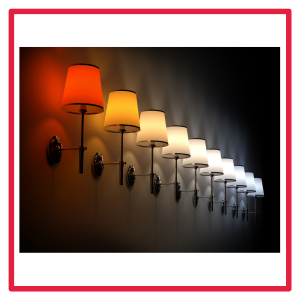LED light colour: How does it affect our colour perception?

LED light colour: How does it affect our colour perception?
The colour of light is a key parameter that determines how a light source is perceived by the human eye. In the case of LEDs, light can have different colours, such as red, green, blue or white with different shades. For white light, two main quantities are important to describe its parameters: the correlated colour temperature (CCT) and the colour rendering index (CRI).
Correlated Colour Temperature (CCT)
The correlated colour temperature (CCT) is a parameter that defines the shade of white light and is measured in kelvins (K). For example, a CCT of 3000 K indicates warm light, which has a yellowish tint, similar to the light emitted by traditional tungsten bulbs. Light with a CCT of 4000-5000 K is similar to natural daylight, while values above 6000 K indicate cold light, which has a bluish tint.
Colour rendering index (CRI)
The colour rendering index (CRI) is a measure of the ability of a light source to reproduce colours faithfully compared to natural daylight. To the human eye, the higher the CRI, the better the quality of colour reproduction. The maximum CRI value is 100 and is achieved by good quality halogen bulbs. LEDs with a CRI above 90 are considered to be very good, while a value in the order of 80 indicates good sources. Values below 70 indicate low-quality light sources that can distort colours.
How is the CRI for LED light sources measured?
The CRI for LED light sources is measured by analysing the light spectrum with a spectrometer. Fifteen test colours that frequently appear in everyday life, such as skin tones, plants, fruit, clothes or water, are selected for testing. Each of these colours is assessed in terms of reproduction quality, and then an arithmetic average is calculated from the results for all colours, which is the CRI value reported in the catalogues. This allows us to assess how faithfully a given LED reproduces colours compared to natural daylight.
